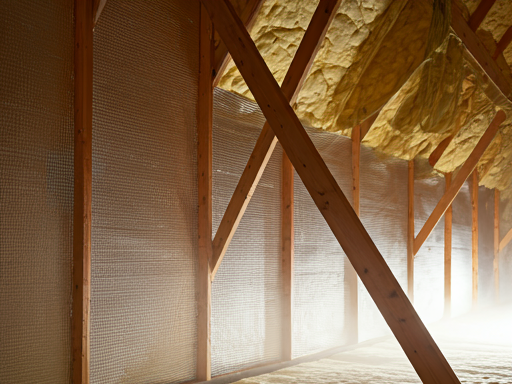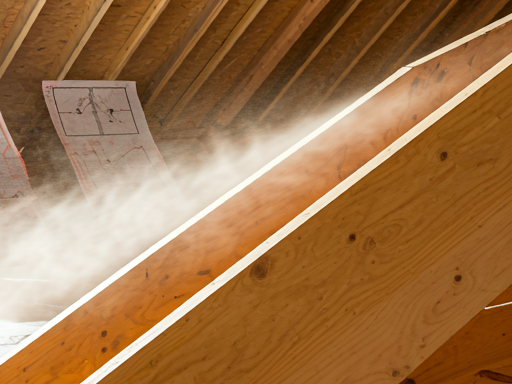Garage insulation improves energy efficiency, comfort, and functionality. Spray-on garage roof insulation is an effective method. This technology enables excellent thermal protection, reduced energy expenses, and consistent temperature throughout the year. With spray foam rafters, your garage will stay warm in the winter and cool in the summer. Insulation improves garage enjoyment and utility for parking, storage, and work. I’ll explain why this insulation is ideal for garage rafters.
What is spray-on insulation?
On application, spray foam insulation expands. It seals gaps and cracks, thereby creating a heat barrier. Spray foam sticks to surfaces, which is ideal for tricky situations like rafters and corners. Sprayed on rafters, it expands and provides a solid insulation layer. A mixture of chemicals expands to form spray foam insulation. This foam provides a continuous, insulating layer on many surfaces, keeping heat in during the winter and out during the summer.

Why Spray-On Garage Rafter Insulation?
Maintaining comfort, energy efficiency, and functionality requires the correct insulation. This versatile and effective spray-on insulation for garage rafters is ideal. Spray foam insulation can reach every nook and cranny, preventing air leaks. Durable, it requires less replacement and maintenance than other insulating materials. Whether you want to turn your garage into a workshop, gym, or more comfortable storage space, spray foam insulation is a beneficial investment.
Spray-On Garage Rafter Insulation Benefits
- Excellent thermal performance
Thermal resistance is better with spray-on insulation. Spray-on insulation is an effective type, boasting a greater R-value. This means improved temperature management, keeping your garage comfortable year-round. Insulation keeps your garage cool during the summer and warm during the winter. This is useful if you frequently operate in your garage or store temperature-sensitive products.
- Air-Sealability
Spray foam insulation seals air leaks, making it distinctive. It fills every crack and crevice in the rafters to avoid drafts. Garages experience a higher air loss rate than other rooms, making this solution particularly beneficial. You can seal these spaces to conserve energy and cool air. Spray foam insulation reduces heat loss from air leaks, lowering energy expenditures.
- Moisture barrier
Spray-on insulation prevents garage condensation and humidity. This is essential if your garage holds critical tools, equipment, or materials. Prevention of moisture buildup reduces mould and mildew, which can harm items and create a hazardous environment. Overwatering can cause wood decay, corrosion, and other structural difficulties in the garage. In humid climates, spray foam is perfect for garage roof insulation due to its moisture resistance.
- Durability.
Spray foam insulation doesn’t change shape or degrade over time. After application, it lasts for years. It is a cost-effective solution for insulating garage roofs. Spray foam maintains its insulation characteristics longer than fibreglass. Thanks to its stiff construction, it sticks to surfaces and keeps its shape, providing long-lasting insulation without maintenance.
- Efficiency
Spray foam insulation reduces air leaks and improves thermal resistance, lowering energy bills. Your HVAC systems will work less, saving electricity. Raft insulation regulates temperature, making your garage more functional year-round. Even if your garage is merely for storage, better insulation can prevent temperature variations from damaging your items. Spray foam insulation reduces carbon emissions by decreasing household heating and cooling energy.
Spray-on insulation types
The major varieties are open-cell and closed-cell spray foam insulation. Each style provides benefits depending on your demands.
Open-cell spray foam
It is appropriate for interior applications since it is less thick and flexible.
This product’s superior insulation and air sealing make it the perfect choice for garage workshops because it absorbs sound.
It is more convenient to employ in confined spaces due to its adaptability.
Closed-cell spray foam
It is the ideal vapour barrier for regions with high moisture content because it is denser, more rigid, and higher R-value than open-cell foam.
It’s helpful in garages and other humid areas. It keeps walls and rafters stable.
Spray Insulation for Garage Rafters
Spraying insulation for garage rafters is easy, but it requires preparation and attention to detail. Step-by-step:
- Prepare Space
Before starting, clear the garage and cover spray-sensitive items. Give the place adequate airflow. Clear the rafters of dust to promote spray foam adhesion. Check for leaks or damage before starting.
- Protective gear
Use gloves, a mask, and protective gear. Spray foam chemicals can harm if inhaled or touched. Keep your eyes protected to avoid irritation. Cover your skin with long sleeves and pants.
- Pick the foam
Your needs determine whether you need open-cell or closed-cell spray foam. Opt for closed-cell foam for high humidity or optimal insulation efficiency in your garage. When choosing, consider moisture levels, R-value, and budget.
- Spray
Start from one end of the rafters and cross. Spread spray foam evenly to fill gaps. Spraying expands foam to cover cracks. Divide the foam into parts to let it grow and settle before continuing. This reduces missing spots and ensures even coverage.
- Let it heal
The insulation should cure after application. To ensure proper setting, let it set overnight, which normally takes a few hours. The foam may fume while curing, so keep the garage well-ventilated.
- Remove unnecessary foam.
Trim any excess foam when it hardens for a clean finish. For this, utilize a utility knife or foam-cutting tools. If you plan to finish your garage, trimming leftover foam will give it a sleek, professional look.
Pros and Cons of Spray-On Garage Rafter Insulation
Pros:
The high thermal efficiency and R-value provide superior insulation.
Features: Effective air sealing minimizes drafts and heat loss; it is durable and requires minimal maintenance. Moisture barriers prevent mould and mildew. Energy savings from reduced energy costs Full coverage for hard-to-reach areas
Cons:
This method has a higher upfront cost compared to typical insulating methods. This method requires either professional equipment or experienced DIY techniques.
Handling chemical components carefully during application is essential, as they may release fumes that require ventilation.
Price of Spray-On Rafter Insulation
The size of the garage, the type of spray foam utilized, and whether you hire a professional or do it yourself can affect the cost of spray-on insulation for garage rafters. On average, open-cell foam costs $1.50–$3 per square foot, and closed-cell foam costs $3–$6. Insulation with a higher initial investment is frequently cheaper in the long run due to energy savings and durability.

High-quality insulation can boost your property value, as energy efficiency is important to homebuyers. Well-insulated garages can also help you sell your property.
Hiring professionals vs. DIY
DIY App
It is cost-effective when combined with experience and equipment. Safety measures and careful planning are required.
This benefits small-scale projects or repairs where hiring professional services isn’t feasible.
Professional Set-up
Ensures appropriate application and coverage. Saves time and effort. This product is ideal for larger areas or inexperienced spray foam users. Professionals offer warranties for further peace of mind.
Conclusion
Spray-on insulation for garage rafters offers unparalleled advantages. It is resistant to air and moisture, efficient in heat, and long-lasting. Long-term savings and comfort justify the higher insulation cost. Whether you DIY or hire specialists, spray foam insulation may make your garage more energy-efficient and usable.
Insulation is crucial for comfort, energy efficiency, and investment protection. Protect garage rafters with high-quality spray foam to save money on heating and cooling. Insulation may also make your garage more comfortable, efficient, and versatile year-round.
FAQ
You can spray foam on most wood and metal rafters. Before applying, the surface must be well prepared. Clean surfaces help foam stick, maximizing performance.
Yes, spray foam insulates rafters to retain heat in winter. This makes your garage more comfy on cold days. This insulation can also preserve vehicles, tools, and other objects by preventing excessive temperatures.
With correct installation, spray foam insulation can last 20 years or more. Its durability makes it an excellent investment because it doesn’t require frequent replacement.
Spray foam is safe when cured. To avoid chemical exposure, wear protective gear during application. Application and curing require adequate ventilation to avoid inhaling fumes.
You may reduce garage noise with open-cell spray foam, mainly if you use it as a workshop or hobby space. This makes project work easier without disturbing family or neighbours.

